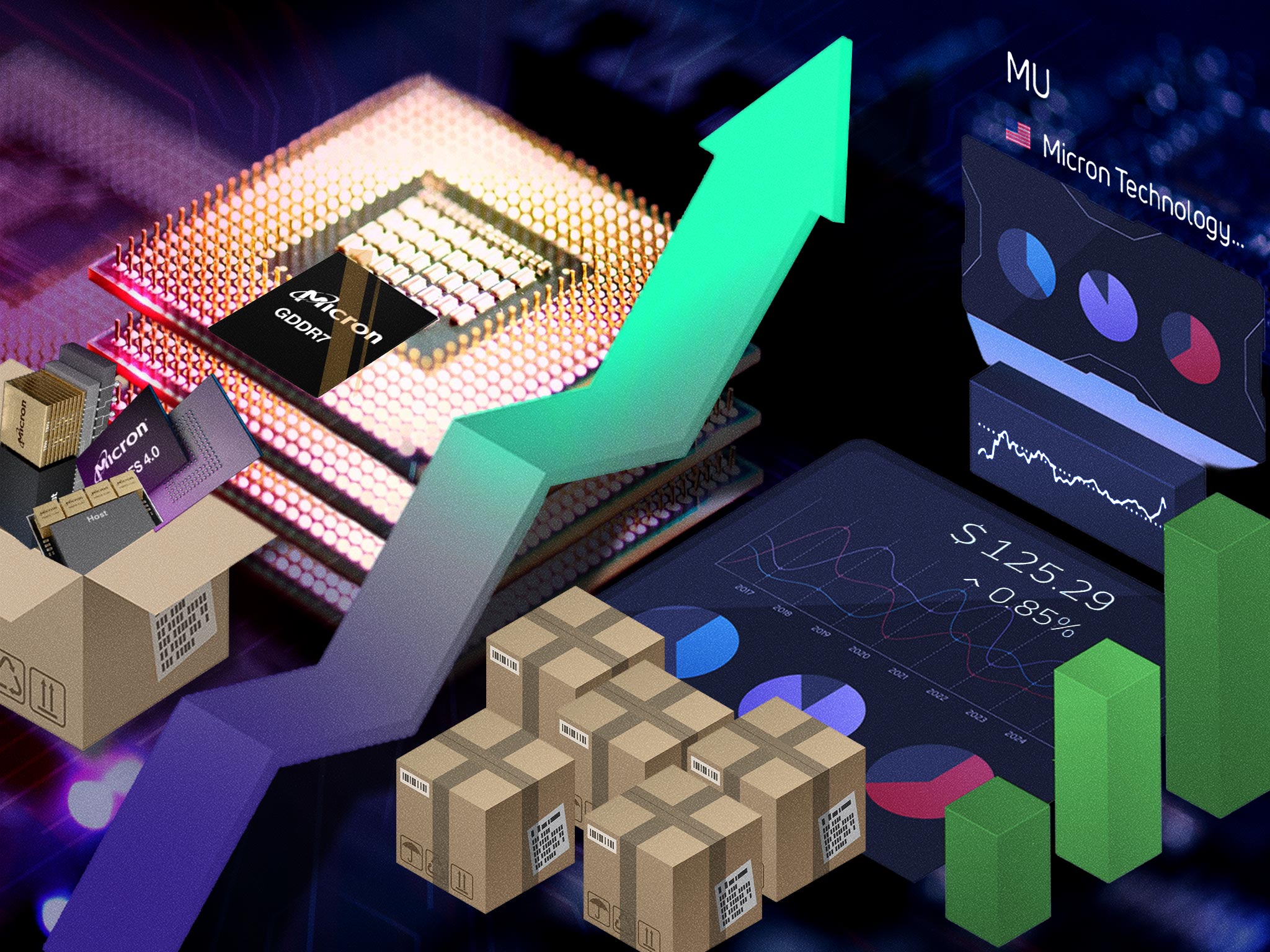Micron Technology (NASDAQ: MU) is benefitting from high demand for memory chips, thanks to widespread use of artificial intelligence and the increased buildout of data centers.
The memory chip maker said higher prices for a critical product led to an increase in its fiscal fourth-quarter revenue and earnings outlook. Micron predicts that revenue will be about $11.2 billion for the quarter ending Aug. 28. The company previously estimated sales of about $10.7 billion.
The positive revision demonstrates the higher pricing in dynamic random-access memory chips and “strong execution,” Micron said. The company also increased its expectations for adjusted earnings per share, estimating about $2.85, compared to the previous forecast of about $2.50.
The upbeat guidance helped the stock, which gained 18% during the past five days. It has jumped by 39% over the past six months.
Micron’s advantage is that it can charge customers more for its HBM4 chips, which are used in AI, graphics applications and high-performance computing. The company’s next-generation HBM4 chips are estimated to sell for 15% to 20% more, due to larger die sizes. The die is the foundational component of integrated circuits.
Chipmakers have been winners of the surge in AI use and increased construction of data centers. That includes Micron’s rivals, such as Western Digital (NASDAQ: WDC), Samsung Electronics and SK Hynix, whose shares also rose during the past six months.
While Micron manufactures memory, storage and multichip packages, Western Digital makes data storage products, including hard disk drives and solid-state drives. Samsung Electronics is a more diversified company, while SK Hynix is also a memory chip maker.
Micron hit a snag in June, when management provided an outlook that did not meet expectations. And in July, there were issues about the strength of demand for memory chips.
SK Hynix, a Korean memory chip manufacturer, saw its stock downgraded for the first time in three years by Goldman Sachs analysts in July. They said pricing for high-bandwidth memory could decline next year. Customers also could have the upper hand, as more competition emerges.
Micron’s stock is likely to continue performing well as long as demand for its memory chips remains high and the AI and data center themes remain at the forefront. Like other chipmakers, it could face some headwinds next year if the economy experiences a slump or companies cut back on spending.
Tariffs aren’t on the table since President Trump said companies who commit to manufacture products here will be exempt. Micron announced that plans to spend $200 billion in semiconductor manufacturing and research and design in the U.S. The investment includes $30 billion beyond its prior plans.




Comments